Dandelions have a reputation as a weed but the dandelion leaves, flowers, and roots are actually very good for us. They are rich in vitamins and minerals and have many health benefits making them a free superfood. This plant has been used as a natural medicine and as a food by many people around the world for centuries.
What is interesting is that they are even grown commercially and you can find the dandelion leaves in health food stores and even in some supermarkets in the spring and summer. Also, the roots are ground up and put into capsules to help with the liver and to cleanse the body. I use them regularly and even sell the dandelion root capsules. Also, the roots can be roasted and ground up to make caffeine-free dandelion coffee that has a chicory taste.
It says,“One day, they’ll be making wishes upon me.” B Atkinson
One beautiful dandelion yellow flower turns to a white head. We all remember as children, blowing them as we made a wish. Little did we know we were furnishing the lawn and garden with many dandelions for our parents to dig up.

What Are Dandelions?
The name dandelion is “dent de lion” originated from the French means lion’s tooth because the leaves have tooth edges.
The scientific name is Taraxacum officinale.
“The Genus name “Taraxacum” is thought to have been derived from a Persian word for the plant: “tarashaquq”. It was recognized and used by Persian pharmacists around 900 A.D. (Thanks, Wikipedia.) The species name “officinale” derives from the Latin “officina”, an office, store-room or pharmacy.” – Nature North
I was surprised to learn that they are a member of the family of daisies which include thistles, artichokes, dahlias, lettuce, and sunflowers. Who would have thought all of those pants were in the same family!
They only grow from seeds and don’t spread from runner roots like some very pesky weeds and they don’t need cross-fertilization.
The dandelion does not stop growing because it is told it is a weed. The dandelion does not care what others see.
“Dandelions, Like All Things In Nature, Are Beautiful When You Take Time To Pay Attention To Them” – June Stoyer
As we all know dandelions are perennials, definitely not annuals which is what we would prefer so we wouldn’t have to be digging up this weed all summer. The big season for dandelions is the spring. I always enjoy seeing fields of beautiful yellow flowers.
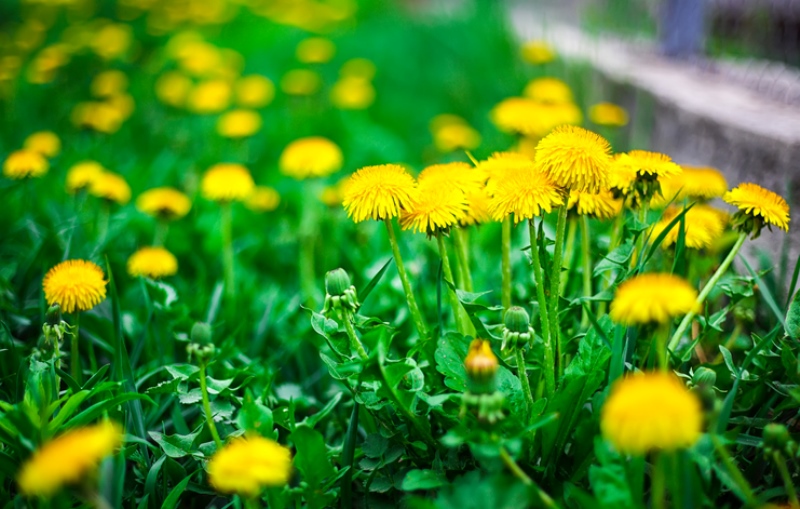
Dandelion Research?
There is very little research on dandelions; there are only 6 human studies and a total of 800 studies. So that makes scientifically verifying the health benefits challenging. There are many studies of dandelion root with animals which I will not refer to.
Health Benefits of Dandelion Leaves
Contain Valuable Antioxidants
They are full of antioxidants which help prevent the negative effects of free radicals. Antioxidants protect and repair damage to the cells, thus decrease disease and signs of aging.
“While it’s true that the package of antioxidants, minerals, fiber, and other substances found naturally in fruits, vegetables, and whole grains helps prevent a variety of chronic diseases, it is unlikely that high doses of antioxidants can accomplish the same feat.” ~ Harvard School for Public Health
It is best to eat real food with antioxidants and not the antioxidant supplement. There is research that has shown that antioxidant supplements actually can decrease life expectancy!
So, do eat your dandelion greens for a natural dose of antioxidants.
Reduce Water Retention
These greens have natural diuretic properties, helping increase urination thus preventing a water build-up. Traditional folk medicine and modern phytotherapy in Asia, Europe, and America have used dandelion greens as a diuretic.
In a study with 17 people at the Department of Herbal Medicine at the Tai Sophia Institute in Maryland, it was found that dandelion greens did increase the frequency of urination. More research with a larger group is needed.
It is thought that with the increase of water weight loss, the diuretic process may help prevent urinary tract infections and assist the liver to remove toxins efficiently.
May Help Lower Blood Pressure
Western medicine has found that diuretic medications used to reduce excess fluid in the body often leads to lower blood pressure.
The dandelion leaves also contain some potassium which is a mineral found to help lower high blood pressure.
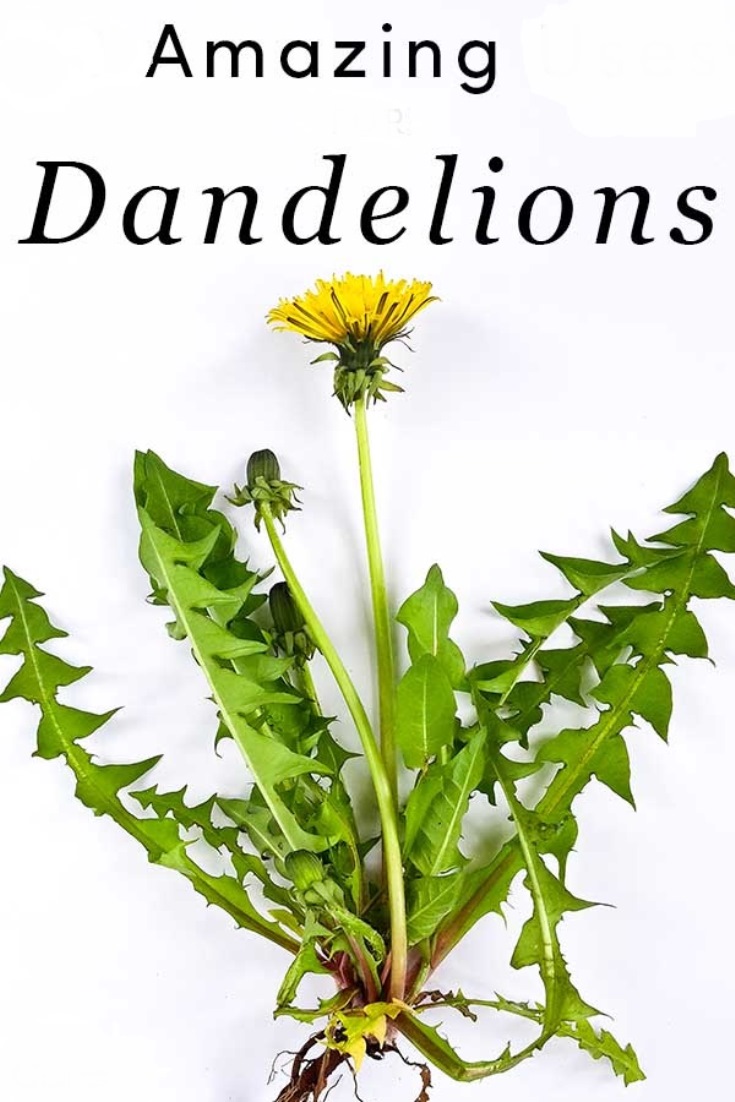
Good for Your Eyes
The greens are very high in vitamin A; one cup will give you 112% of the daily requirements. We need vitamin A to keep our eyes healthy. A severe deficiency in vitamin A could lead to blindness.
In a study with 5,836 older adults, it was found that a high supplementation of beta vitamins A, C and E, and zinc substantially reduced the risk of age-related macular degeneration. By adding the greens from dandelions and other vitamin A-rich foods they can help keep your eyes healthy.
Helpful for Weight Loss
They are very low in calories with only 25 calories per cup of the greens. Also, dandelion greens contain a good fiber, which can be very filling thus reducing hunger and keeping you feeling full and this, as you know, helps with weight loss.
Dandelion greens inhibit the absorption of fat by blocking the activity of pancreatic lipase, which is an enzyme that breaks down fat molecules. A study found that dandelion extract cut pancreatic lipase activity by 86 percent so there was much more elimination of fat. More research is still needed on this.
If you want to lose weight fast, then eat your dandelion greens as part of a healthy diet and get regular exercise.
Dandelion Leaves Are Good for Healthy Bones
Calcium and vitamin K are very much needed for healthy bones and the prevention of bone loss. These greens are packed with vitamin K as one cup has 535% of your daily requirement. Also, they are a good source of calcium which we know the bones need.
More research is needed to learn more about the effect of dandelion leaves for bone health.
Can Help Fight Inflammation
The body responds to illness or injury with the natural response of inflammation which is helpful. Problem is that excessive inflammation helps create damage to your body’s tissues so we need to reduce it.
There have been test-tube studies that show that dandelions reduce inflammation. What we need are studies on humans.
Some people can have an allergic reaction when eating or even having the skin touched by dandelions. Often these same people are allergic to ragweed, daisies or thistles which are in the same plant family. If redness, itching or swelling happen, stop use immediately and talk to your doctor.
Dandelion greens are high in vitamin K, which may affect blood clotting. Those taking a blood thinner, it is important to continue consistent vitamin K intake which will prevent the interference with your medication.
It is a natural diuretic and could increase lithium levels. If you are taking lithium consult with your doctor to be sure that dandelion is good for you. Also, if you are taking antibiotics it may decrease absorption and effectiveness.
That all said, dandelion greens and dandelion root side effects are slight for most people and can be a healthy food to add to your meals.
Dandelion Leaves Nutrition
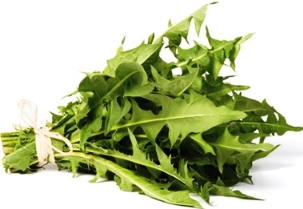
The great thing about these leaves is that they are high in many nutrients, fiber and happily low in calories. One cup of dandelion greens only has 24.7 calories and even 1.5 grams of protein. The two highest vitamins it has is 428 micrograms of vitamin K which is 535% of daily requirement and 5,588 international units vitamin A which is 112% of daily requirements.
Learn all the nutritional details here: Dandelion Leaves Nutrients
Dandelion Trivia
- They are important for bees as they are a key source of nectar because they flower early and continue flowering right into the fall as we have all noticed. We also know how important they are to bees, Bees Are Essential for Life Here on This Earth
- Dandelions seeds are food for many small birds.
- Another French name is pis-en-lit, which means “wet the bed.” This comes from the fact that when the greens from dandelions are eaten, they remove water from the body.
- So much rubber was in need for the war effort during World War 2, that alternatives were sourced and dandelions benefits as a rubber substitute were investigated.
Dandelion History
Dandelion has a rich history in its use as a medicinal plant.
- Dandelions came into existence about 30 million years ago in Eurasia.
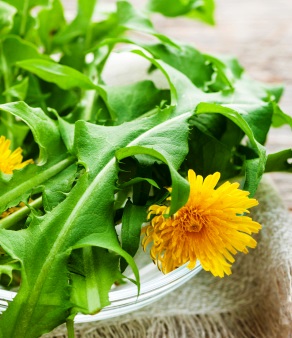
Dandelions greens and flowers - The health benefits of dandelions have been known for a long time as humans have been eating them as food and using them as medicine for as long as there has been recorded history.
- The origins of dandelion as a natural remedy can be traced back to 659 B.C. in ancient China. It was also used in Arabic, Welsh and European medicine and was eaten raw or as a juice or tonic.
- Before the year 1000, Arabs also used dandelions as a medicine.
- They are native to Europe and Asia and have been brought to many places like North America on boats centuries ago because people wanted them in their new home.
- European immigrants used dandelions as part of their regular diet and brought them over and began to cultivate them in North America.
- “In the tenth and eleventh centuries, there is mention of dandelions used for medicinal purposes in the works of Arabian physicians.” – Columbia University.
- Traditional uses of the dandelion ranged from promoting better digestion to healing the liver. There were Native American tribes that would steam the leaves and use them to ease sore throats.
How to Select Dandelion Leaves
It is easy to find lots of dandelions in our backyards and even in supermarkets and farmer’s markets. When you are picking them, make sure you are not picking the greens where weed killer or pesticides have been used.
The best dandelion leaves are from the younger plants as they are less bitter and more tender.
Tips for Eating Dandelion Leaves
- Dandelion leaves have an earthy, bitter taste so it is best to add to dishes that have other vegetables in them.
- Are easily prepared by steaming them along with other vegetables.
- Can also be sautéed with onions and mushrooms.
- They are even good eaten raw in a salad or a smoothie.
- You can use the leaves in soups and stews.
- Mix some into casseroles.
Delicious Dandelion Leaves Recipes
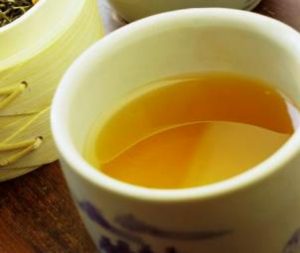
Dandelion Leaves Tea – Made with the leaves — this is perhaps the easiest and fastest way to use a dandelion.
Dandelion Smoothie – After almost passing out from a dandelion smoothie, Randy gives some practical tips to keep your dandelion smoothie palatable.
Other Recipes with Dandelions
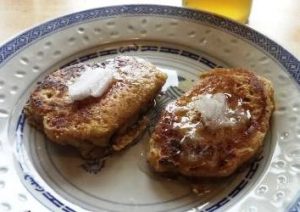
Roasted dandelion roots make a tasty vegan beverage in the form of Dandelion Root Coffee – Learn how to make delicious dandelion root coffee with this simple how-to article and stop cursing at this wonderful plant.
Dandelion Flower Pancakes – No milk or eggs, but lots of health and good taste. I developed it when I was unable to eat eggs or milk at all due to food sensitivities. Interestingly whenever I make these pancakes no one seems to notice the lack of these two ingredients.
Dandelion Flower Syrup – You can taste the unique sweetness from the yellow petals. This is a great treat from your weeds and it is so easy to make. Pick your dandelions before mowing the lawn or digging them up for dandelion coffee. Or go out into the country and pick them in the wild away from pollution. Never use ones that have been sprayed.
Dandelion Flower Cordial – The word cordial sounds tasty, and it’s very appropriate in this case!
Learn More About Dandelions
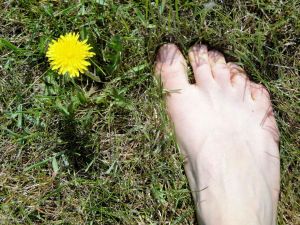
Dandelion Flower Health Benefits – The flowers do have health benefits in nutrients, just not as many as the roots and leave.
10 Health Benefits of Dandelion Roots – The benefits of dandelion roots seem to stem from this weed herb’s tonic effect on the liver. Dandelions are very economical herbs considering that they are weeds that most of us dig and get rid of!
Dandelion Madness – Every morning, particularly in the spring, you can catch me scampering around my front lawn in my bare feet. Yes this is fun and yes, this is actually good for you.
Dandelions Benefits: A Celebration of This Spring Flower – Dandelions benefits cannot be dismissed as they have been used as food and for medicine for thousands of years. Every part of this plant is extremely good for you! There are many dandelions health benefits for us.
When there are dandelions around first thing in the spring it is time for a Spring Cleanse
More Free Food In Your Yard For You
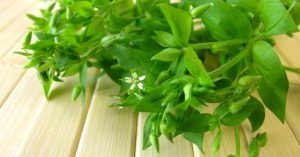
Chickweed, a Tasty, Healthy Weed for Eating – Chickweed is a tasty nutritious weed. Many of the weeds in our garden are food that I include them in my meals and let some of them grow as real food in my garden. ‘Little star in the mist’ is the translation of this weed’s scientific name, Stellaria Media, though “chickweed” is the most common name.
Cooking With Wild Plants – When the weather gets warm I get excited about picking wild greens (also known as Weeds). All of my life I have eaten wild plants and you can too.
The Man Who Tried to Eat Canada Thistle – Randy has had various experiences with the wild plants in his yard and garden. Some of them are pleasant experiences, and some of them are not. This story falls into the second category, find out more about it.
Good Weed…Bad Weed – Randy has had an on /off relationship with weeds recently and now he’s at it again. This time his attention has now gone to yet another weed called Lamb’s Quarters. This one’s not so pesky to your lawn and it tastes much better. Actually, it tastes almost exactly like spinach – particularly when cooked – and again, it has all kinds of nutritional value and… it’s free.
100+ Superfoods
Learn more about some of the healthiest vegan nuts and seeds you will always want to have in your fridge or pantry
READ: Superfoods – Over 100 of the Healthiest Foods You Should Have in Your Diet and learn more about the variety of Superfoods we think you should have in your diet.

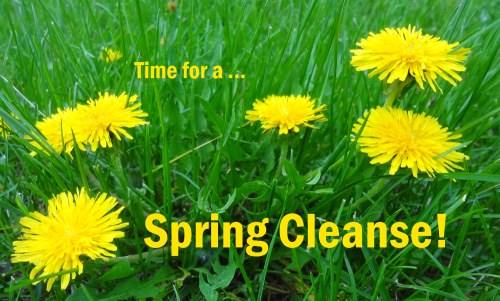

Thanks Randy for this great info. It comes at the perfect time when all of our lawns are bursting out in these great yellow blooms. If more people knew about these great benefits, maybe some enterprising person or company could figure out a way to market them…oops I forgot that was one of the benefits…they’re FREE! Forget my idea.
Thanks again, I’ll be forwarding this info on to my group!
Ann
Dandelions for Dinner!
Dandelions are one of the most useful and nutritious herb foods. The leaves are high in potassium, Vitamin A, B, C and D, the A content being higher than that of carrots. They also have iron, fiber, protein and a little carbohydrate.
The best thing about them is that they are free and are there for the picking as Randy does. I will dig them up with the roots intact and keep the roots in water in a bowl till I am ready to eat them thus keeping them as live food.
Other then putting them in smoothies and salads; I simply steam them along with my other vegetables.
Does anyone have any great recipe ideas for Dandelion Greens?
Do you just eat the greens and flowers? You don’t do anything with the roots?
I don’t have a LOT of experience with the roots. (perhaps because I’m lazy?) A big root looks something like a carrot with the outer skin that has to be washed and then pealed, a middle fleshy portion and a woody center. I suspect the fleshy center is the ‘good’ part to you because it tastes much stronger than the woody center. Its so strong that I just nibble a bit at it. If you BAKE the root it tastes much better.
Washing and baking the root is a lot of work. I don’t know how they do it commercially but I am glad there are good sources of high quality dandelion root that you can buy!
Friday dandelion smoothie:
I live in the country during the week and by Friday the fridge often gets dangerously empty, especially on greens. But we have a huge lawn with thousands of dandelions.
I am also on a candida cleanse right now, so no fruit for me, except for lemons.
That leave me with this very simple smoothie:
dandelions, dandelions,dandelions
1/2 a lemon
water
okay I admit this doesn’t taste great,
but add a few celery stalks and some soaked almonds, some ground flax seed and it becomes almost delicious !
And the good thing is I feel great and it hasn’t killed me yet. And it is free and abundant!
I’m impressed that you can take the taste! You’re a better (wo)man than I am, Gunga Din!
There is another post about weeds called Good Weed – Bad Weed at …….
Just wondering about dandelions growing in lawns that are full of pesticides/chemicals. I know the Weed Man or Lawn Care ppl come to the house like clockwork in the spring, and start putting all this stuff on the lawn – for what, I don’t know. Actually now that I think about it…we don’t have any dandelions on our lawn! So I guess dandelions will not grow if the lawn has been treated w/ chemicals. So is it safe to say that if dandelions are growing, they are safe to eat, free of chemicals?
I personally would not eat dandelion from a area I know was sprayed. There are so many nonsprayed areas to chose from . I had never thought about there no being spray if there is weeds. This would be true MOSTLY. Dandelion are so vital and invasive I suspect a lot of them could still grow in an area that was sprayed. Most herbicides work mostly on the leaves so young plants could still grow.
I can’t wait to try this! I have a whole yard full of dandelions!
thanks for the comment Marlene. Just don’t eat TOO MANY dandelions at one time. I did that once. See Dandelion Moderation at https://www.realfoodforlife.com/dandelion-smoothie-tips/ where I tell my story.
Great article! I love Dandelions so much I started a Dandelion Appreciation Society, feel free to check it out
Peace
Thanks Alan. I went to your site and it has a lot of great information on it. Congrats and I hope you keep up YOUR good work.
In Greece they eat Dandelion (called Hortah) every day……wash well, boil, drain and serve with olive oil, lots of fresh lemon, ground pepper and sprinkle with crumbled feta cheese! Cheese is a must. Use no salt.
mmm Sandy that recipe sounds yummy! Thank you.
Hey Diana,
Try cooking fresh beets with their greens and serving the same way. Most people don’t realize beet greens are edible and oh so tasty! Enjoy!
Yes Sandy beet greens are great and I eat a lot of them every summer because they are tasty and nutritious.
I love to add fresh young nettles to spinach, swiss chard, garlic scapes and dandelions in a garlic/avocado oil saute.
I make dandelion pasta. I saute the washed young dandelion leaves until limp. Chop up and add to 3 eggs, 3 tablespoons oil, 3 cups flour and teaspoon salt. Bind all together. Let rest for 30 minutes then roll out thinly and proceed making tagliatelle or spaghetti pasta. Cook as you would normal pasta. Serve with a little knob of butter and grated parmesan or with a creamy mushroom sauce. So yummy and easy.